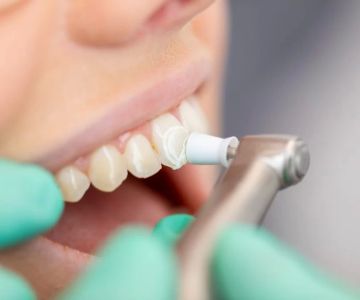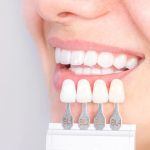
What Are the Signs That My Child Needs Braces?
- Common Signs Your Child Needs Braces
- How to Identify Bite Issues
- When to Visit an Orthodontist
- Impact of Delaying Braces
- Tips for a Successful Orthodontic Journey
1. Common Signs Your Child Needs Braces
As a parent, it can be challenging to know when your child might need braces. However, there are several common signs that indicate it may be time to consult an orthodontist. These signs include:
- Difficulty Chewing or Biting: If your child has trouble biting into food or chewing properly, it could be a sign of misaligned teeth or bite problems.
- Teeth That Are Crooked or Overlapping: Crooked or overlapping teeth are one of the most obvious signs that your child may benefit from braces.
- Visible Gaps Between Teeth: If your child’s teeth are spaced too far apart, it might indicate the need for braces to close these gaps.
- Frequent Mouth Breathing: Mouth breathing can indicate problems with the alignment of the jaw or teeth, which braces can help address.
- Thumb Sucking or Other Habits: Persistent thumb sucking or other oral habits can impact the alignment of teeth and may require braces to correct.
If you notice any of these signs, it’s a good idea to schedule an evaluation with an orthodontist, who can assess whether braces are necessary.
2. How to Identify Bite Issues
Bite issues are one of the main reasons children require braces. These issues can affect the way teeth come together, leading to difficulty in eating, speaking, or even breathing. Here are some bite-related concerns that may indicate the need for braces:
- Overbite: When the upper teeth overlap excessively over the lower teeth, it’s known as an overbite. This can cause discomfort and long-term dental problems.
- Underbite: An underbite occurs when the lower teeth protrude beyond the upper teeth. This misalignment can lead to jaw strain and difficulty chewing.
- Crossbite: A crossbite happens when the upper teeth bite on the inside of the lower teeth, which can lead to gum disease and tooth wear.
- Open Bite: An open bite happens when the front teeth don’t touch, even when the back teeth are clenched. This issue can affect speech and chewing.
Identifying these bite issues early can help in preventing more serious dental problems as your child grows. An orthodontist can help diagnose the severity of the issue and determine if braces are the solution.
3. When to Visit an Orthodontist
While every child develops at their own pace, it’s typically recommended to visit an orthodontist by the age of 7. Early evaluation allows the orthodontist to detect potential problems, even before they become visible to parents. However, if you notice any signs mentioned above, it’s never too early to schedule a visit. The orthodontist will assess your child’s teeth, bite, and jaw alignment and determine whether braces or another orthodontic treatment is necessary.
In some cases, early intervention may be recommended to help guide the growth of your child’s teeth and jaw, reducing the need for more extensive treatment later on.
4. Impact of Delaying Braces
Delaying the decision to get braces can have significant consequences for your child’s oral health. Here are a few reasons why it’s important not to wait too long:
- Worsening Alignment Issues: Without treatment, misaligned teeth and bite problems can worsen, leading to more complex and expensive treatment options in the future.
- Difficulty with Oral Hygiene: Crooked teeth can make it more difficult to clean your child’s teeth effectively, leading to cavities, gum disease, and other dental issues.
- Increased Risk of Tooth Damage: Teeth that are misaligned or protruding are at higher risk of being damaged or chipped.
By addressing these issues early, you can help your child avoid these complications and ensure they have a healthy, beautiful smile for years to come.
5. Tips for a Successful Orthodontic Journey
If you decide that your child needs braces, here are a few tips to ensure the journey is successful:
- Start Early: As mentioned, an early visit to the orthodontist can help guide treatment and reduce the need for more invasive procedures later.
- Follow Care Instructions: It’s important for your child to follow all care instructions provided by the orthodontist, including proper cleaning techniques and dietary restrictions.
- Be Patient: The process of wearing braces can take time, but the results are well worth it. Encourage your child to be patient and stay motivated throughout the treatment.
- Attend Regular Check-Ups: Regular visits to the orthodontist are essential for monitoring progress and making adjustments as needed.
With the right care and attention, your child will soon have a straight, healthy smile that boosts their confidence.
If you’re wondering whether your child might need braces, or if you’d like to learn more about orthodontic treatments, visit Dentistry Toothtruth to schedule a consultation with our experienced orthodontists.






 Westgate Dental Arts
Westgate Dental Arts Coventry Family Dental
Coventry Family Dental Familia Dental
Familia Dental Dr. Daniel S. Fife, DDS
Dr. Daniel S. Fife, DDS Dentistry At Suburban Square: Michael I. Wollock, DMD
Dentistry At Suburban Square: Michael I. Wollock, DMD Comfort Care Dental
Comfort Care Dental The Importance of Oral Health Education During Pregnancy for a Healthy Pregnancy
The Importance of Oral Health Education During Pregnancy for a Healthy Pregnancy Why Skipping Dental Checkups Can Lead to Bigger Oral Health Problems
Why Skipping Dental Checkups Can Lead to Bigger Oral Health Problems Best Tips for Brushing Your Teeth Properly for Healthy Gums: Essential Techniques for Oral Health
Best Tips for Brushing Your Teeth Properly for Healthy Gums: Essential Techniques for Oral Health Advantages of Porcelain Dental Restorations
Advantages of Porcelain Dental Restorations How Can Diabetes Cause Tooth and Gum Problems? Preventing and Managing Oral Health Issues
How Can Diabetes Cause Tooth and Gum Problems? Preventing and Managing Oral Health Issues Healthy Habits for Promoting Good Oral Health and Hygiene: Tips for a Healthy Smile
Healthy Habits for Promoting Good Oral Health and Hygiene: Tips for a Healthy Smile